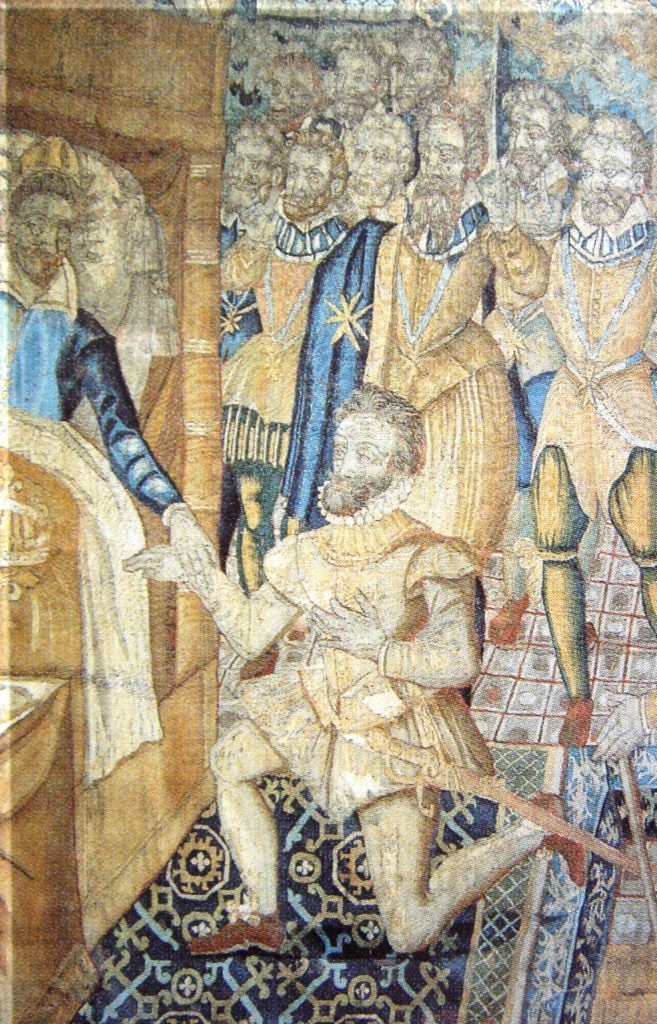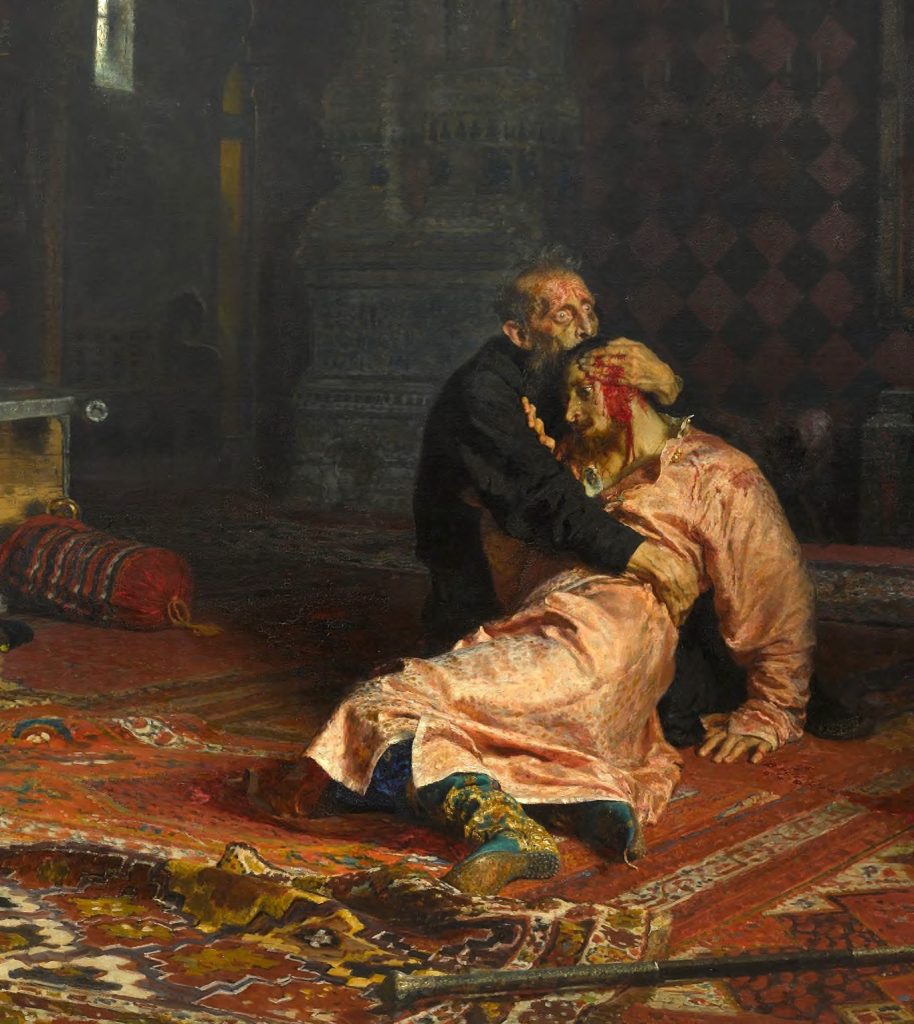Here were the events of 1584 CE that were most relevant to the emergence of “Western” domination of the world:
- Queen Elizabeth asks Raleigh to found England’s second settlement in the Americas.
- A succession crisis looms in France. Spain intervenes.
- Ivan the Terrible dies after a 51-year reign.
- Spain gives Philippines its own administration, no longer under Mexico’s.
Before we dive into the list, a small further note. 1584 was also the year in which the Pope established the “Maronite College” in Rome, to provide a Catholic-focused education under the care of the Jesuits to clergy of the small Maronite church indigenous to West Asia. This was part of a longterm Papal project to build alliances with the indigenous churches of West Asia. The Maronites were allowed to keep their own “Patriarch” and their tradition of clergy marrying– seemingly a more generous treatment than the one the Jesuits had meted out to the Nestorian Christians of Goa.
Queen Elizabeth asks Raleigh to found England’s second settlement in the Americas.
In 1584, hot on the heels of her recent despatch of Humphrey Gilbert to establish a settlement in Newfoundland, Queen Elizabeth, still unmarried and proud of her designation as “the Virgin Queen”, granted Walter Raleigh a charter for the colonization of a more southern area of North America to be called “Virginia”.
Specifically, the charter authorized Raleigh to explore, colonize and rule any “remote, heathen and barbarous lands, countries and territories, not actually possessed of any Christian Prince or inhabited by Christian People”… in return for one-fifth of all the gold and silver that might be mined there. The charter specified that Raleigh had seven years in which to establish a settlement, or lose his right to do so. Raleigh and Elizabeth reportedly intended that the venture should provide riches from the New World and a base from which to send privateers on raids against the treasure fleets of Spain.
Raleigh did not go himself but he sent Ralph Lane to establish what he called the “Roanoke Colony” on the shore of what is now known as North Carolina. That attempt failed, as did a follow-on in 1587.
By the way, did I mention that while Raleigh had been waging religio-colonial war against the Desmond Rebellions in Ireland a few years earlier, he had led a party that beheaded some 600 soldiers described as “Spanish and Italians”– and had been granted 40,000 acres of land in the areas seized from the local rebels?
He later got into a lot more trouble. His 1584 charter for “Virginia” lapsed in 1591 and he never actually went to North America. But in 1585 Elizabeth knighted him.
A succession crisis looms in France. Spain intervenes.
Spain’s King Philip II had done well by astutely playing the succession game in Portugal. But now, suddenly a new succession crisis arose in France– with whose Catholic kings he had long had a complex kind of frenemy relationship. The French king, Henry III had been born in 1551 and still hadn’t produced an heir. Big rumors of his homosexuality all around. Then in 1584, his younger brother died– and now the French laws of succession would, upon Henry III’s death, send the crown to his cousin (and brother-in-law), Henry of Navarre… who had been raised a Protestant!
Philip II and his people got into a big snit. Reaching out to a rightwing Catholic body in France called the Catholic League, they concluded a treaty that would recognize the League’s favorite, cardinal Charles de Bouron as the next French ruler. (Though I don’t see how having a cardinal as French king would solve the succession crisis over the longer haul– as we had seen in Portugal, already.)
Some of the other provisions of that 1584 Treaty of Joinville were illuminating. “Catholicism would be the only religion allowed in France. Those who would not convert to Catholicism would be exterminated.” “The Franco-Ottoman alliance and French voyages to the Indies and Azores would cease.” And so on…
Queen Elizabeth “was terrified by the nightmare scenario of a Catholic alliance between France and Spain against England.” And having stood back for years from providing direct support to the anti-Spanish (and Protestant) “United Provinces” rebels in the Netherlands, in 1585 she would conclude a direct and open treaty with them– the first they had concluded with any outside power.
Anglo-Spanish tensions were rising, rapidly…
Ivan the Terrible dies after a 51-year reign.
What can we say? He was “terrible”– Grozny, in Russian. He did terrible things, inflicted terrible suffering on maybe millions of people. Including: in 1581 he beat his daughter-in-law so badly that she probably miscarried and when her husband– his son– intervened Ivan struck his son in the head with a pointed staff and killed him.
And he created the extensive, centralized Russian empire/state that grew out of what had previously been his base of power and legitimacy: the Grand Duchy of Moscow. Here‘s how English-WP sums up his life:
Ivan was the son of Vasili III, the Rurikid ruler of the Grand Duchy of Moscow and was appointed Grand Prince when he was three years old after his father’s death. A group of reformers known as the “Chosen Council” united around the young Ivan, declaring him tsar (emperor) of All Rus’ in 1547 at the age of 16 and establishing the Tsardom of Russia with Moscow as the predominant state. Ivan’s reign was characterised by Russia’s transformation from a medieval state to an empire under the tsar but at an immense cost to its people and its broader, long-term economy.
During his youth there was a conquest of the Khanate of Kazan and the Khanate of Astrakhan. After he had consolidated his power, Ivan got rid of the advisers from the “Chosen Council” and triggered the Livonian War, which ravaged Russia and resulted in the loss of Livonia and Ingria but allowed him to establish greater autocratic control over Russia’s nobility, which he violently purged by the Oprichnina [a personal Pretorian guard he had established to protect himself from the nobles.] The later years of Ivan’s reign were also marked by the Massacre of Novgorod and the burning of Moscow by Tatars.
Historic sources present disparate accounts of Ivan’s complex personality. He was described as intelligent and devout but also prone to paranoia, rages, and episodic outbreaks of mental instability that increased with age. In one fit of outrage, he murdered his eldest son and heir, Ivan Ivanovich, and the latter’s unborn child, which left his younger son, the politically ineffectual Feodor Ivanovich, to inherit the throne, a man whose rule directly led to the end of the Rurikid dynasty and to the beginning of the Time of Troubles.
Spain gives Philippines its own administration, no longer under Mexico’s.
Until now, Spain’s growing colonial presence in the “Philippines” had always been administered from “New Spain”, that is, today’s Mexico and Central America … And until 1580, nearly all the extremely valuable spices the Spanish colonists could gather from the “Spice Islands” all around them had to shipped back to Spain via the lengthy route that traversed “New Spain”, since under the Treaty of Zaragoza Spain was not allowed any presence in the Indian Ocean. (The “New Spain” route, remember, involved shipping products to the west coast of today’s Panama, then hauling them on a mule train across the isthmus before shipping them on to Europe.)

The formation of the Iberian Union in the years after 1580 changed all that. Now, Madrid/Lisbon could administer the Philippines directly, via an Indian Ocean route. One early result was that the Real Audiencia de Manila was established in 1584 as the highest tribunal of the Spanish Empire in the East Indies, that had the Governor-General of the Philippines as its ex officio highest judge.
The Spanish East Indies came to be defined as:
- Las Islas Filipinas (today the Republic of the Philippines): Manila, Luzon, the Visayas, Palawan, Balambangan Island, Northern Mindanao, Zamboanga, Basilan, Jolo, Palmas Islands, Spratly Islands; including isolated outposts in Keelung, Taiwan, and in the islands of Gilolo, Ternate, and Tidore in the Maluku Islands and Manado in Northern part of Sulawesi (formerly Celebes).
- Islas Carolinas (the Federated States of Micronesia)
- Islas Marianas (Commonwealth of the Northern Mariana Islands and the United States Territory of Guam)
- Islas Palaos (Republic of Palau)
Clearly, the Spanish were settling into the area for the long haul…
By the way, the banner image at the top is a painting of Chamorro people meeting a Spanish galleon in the Ladrones (Mariana) Islands, from the Boxer Codex.



